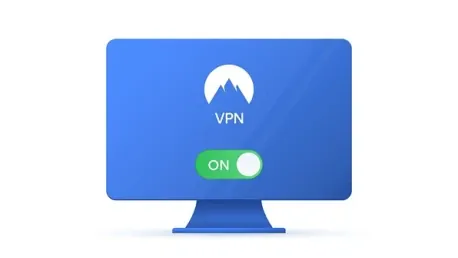In today’s digital age, protecting online privacy and security is paramount. While Virtual Private Networks (VPNs) have been a popular choice for safeguarding browsing activities and bypassing geo-blocking, they are not without flaws. VPNs can suffer from data leaks, outdated servers, data retention policies, and slower connection speeds. This article delves into eight alternative solutions that offer varying degrees of privacy, security, and convenience, catering to different user needs and circumstances.
Onion Routing (Tor)
Multi-layered Encryption for Enhanced Anonymity
Tor, or The Onion Router, employs multiple layers of encryption to ensure data security and anonymity. Unlike VPNs, which encrypt data only once per server, Tor uses multiple layers of encryption and sends the data through a network of volunteer-run servers. Each server, or node, peels away one layer of encryption, akin to an “onion.” This method ensures that while entry nodes are visible to ISPs, subsequent layers provide better anonymity.
Tor’s multilevel encryption design makes it highly effective against a variety of surveillance tactics. Data not only passes through several nodes but is encrypted anew at each stage, ensuring that no single node, other than the source, knows the data’s ultimate destination. This complexity provides an extra layer of security that is absent in traditional VPNs. However, this rigorous security mechanism does impact its performance, causing slower speeds, which might not be ideal for activities that require real-time processing, such as gaming or streaming.
Traceless Browsing and Avoiding Surveillance
Tor is particularly effective for traceless browsing, avoiding surveillance, tracking, and accessing the dark web. Internet Service Providers (ISPs) and potential adversaries find it significantly challenging to track users’ online activities due to the multi-layered encryption approach. For users whose primary concern is maintaining the highest possible level of anonymity, Tor offers a unique value proposition that far exceeds that of conventional VPN services.
Despite its slower speeds, Tor remains a robust option for users prioritizing anonymity over performance. People who are at risk of surveillance, such as journalists, activists, and those living under restrictive regimes, often turn to Tor for its unparalleled ability to conceal their online footprints. Moreover, Tor’s open-source nature allows continuous enhancement and scrutiny by the community, ensuring that it adapts to evolving privacy and security challenges.
Identity and Access Management (IAM)
Protecting User Identities in Organizational Settings
IAM solutions focus on protecting user identities rather than IP addresses and are commonly used in organizational settings. These solutions are vital in preventing data leaks by requiring multiple forms of verification before granting access. They provide robust security for user accounts and personal information through advanced encryption methods, such as AES 256-bit.
IAM systems are designed with an emphasis on managing digital identities, knowing who a person is, what they are allowed to access, and ensuring these permissions are enforced accurately. In an organizational context, this means employees use unique credentials to access systems and data, often verified through multiple methods, including biometrics or two-factor authentication. This complexity makes it incredibly challenging for unauthorized users to gain access to sensitive information, ensuring a robust layer of security that surpasses the mechanisms offered by typical VPN setups.
Examples and Applications of IAM Solutions
Zoho Vault offers a free lifetime account with strong IAM features, making it accessible for individual users and small businesses. Other notable IAM solutions include Microsoft’s Entra ID and Google’s IAM, though they typically do not offer free trials. IAM is crucial for environments requiring rigorous access controls, such as schools and companies, ensuring that only authorized individuals can access sensitive information.
In practice, IAM systems significantly reduce the risk of unauthorized access and data breaches, providing peace of mind that other solutions may not offer. For example, within a corporate environment, IAM controls might integrate with various business applications and network resources, enforcing consistent security policies across all platforms. The application of IAM extends to cloud services too, where managing access to cloud-based applications is critical. By ensuring that only the right people have the right access at the right times, IAM effectively mitigates threats arising from identity theft and insider attacks.
Privileged Access Management (PAM)
Advanced Security for High-Level Users
PAM is an advanced method targeting the security needs of high-level users, like network administrators and CEOs. It protects privileged accounts from data breaches by employing centralized password vaults, automated password resets, and session monitoring and recording. These measures ensure that high-level accounts are safeguarded against unauthorized access and potential cyberattacks.
In organizations, privileged accounts are often the primary targets for cybercriminals due to their extensive access rights. PAM tools focus on securing these sensitive accounts by enforcing strict access controls and monitoring mechanisms. For instance, session monitoring allows administrators to keep track of activities conducted under privileged accounts, while automated password resets ensure that credentials are regularly updated and stored securely. By centralizing and tightening control over privileged accounts, PAM effectively reduces the risk of catastrophic security breaches.
Comprehensive PAM Features and Solutions
ManageEngine’s PAM360 is an example of a comprehensive PAM solution, providing robust security features for privileged accounts. PAM is critical for preventing attacks on accounts with elevated privileges, supplementing broader IAM measures. By focusing on high-level users, PAM ensures that the most sensitive accounts within an organization are well-protected.
The strategic importance of PAM becomes evident in scenarios where privileged accounts can access critical systems and confidential data. PAM solutions often incorporate advanced features such as behavioral analytics to detect anomalies and potential threats in real-time. By integrating these sophisticated tools, organizations can enforce a zero-trust security model, ensuring that only authorized actions are performed under privileged accounts. The overarching benefit of PAM lies in its ability to prevent insider threats and minimize the attack surface for external actors, thereby fostering a secure operational environment.
Zero Trust Network Access (ZTNA)
Reducing Cyberattack Surfaces with Independent Authentication
ZTNA reduces cyberattack surfaces by requiring independent authentication for every access attempt through tightly controlled private networks. This approach ensures that each access request is verified, minimizing the risk of unauthorized access. ZTNA solutions like NordVPN’s NordLayer rely on multi-factor authentication and biometric protocols to safeguard sensitive information.
ZTNA operates on the principle of “never trust, always verify,” which means that no user or device is trusted by default, regardless of whether they are inside or outside the network perimeter. Each access request is evaluated using dynamic policies, contextual information, and identity validation. By enforcing strict controls and verification at every access point, ZTNA significantly reduces the likelihood of successful cyberattacks and unauthorized intrusions. This model is particularly effective for modern networks where variables like remote access, cloud services, and mobile devices introduce additional complexity.
Adoption Across Various Sectors
Originally prominent in healthcare and regulatory environments, ZTNA is increasingly adopted across various sectors for stringent security measures. By implementing ZTNA, organizations can ensure strict access controls, making internal and external threats less likely. This method is particularly effective for industries that handle sensitive data and require rigorous security protocols.
ZTNA’s adoption is driven by the growing complexity and diversity of enterprise networks, where traditional perimeter-based security models no longer suffice. As organizations embrace digital transformation, the need to protect data and resources spreads beyond the physical boundaries of the office, encompassing remote workers, third-party partners, and cloud environments. ZTNA’s granular access control and continuous verification model provide a robust, scalable solution that adapts to these evolving requirements, ensuring that security is maintained without compromising agility or user productivity.
SSH Tunneling
Securing Individual Applications or Ports
SSH tunneling secures individual applications or ports, providing protection for remote machine identities. It forwards information securely using command-line tools or specific applications for Windows, Linux, and macOS. This method is ideal for users with specific remote access needs rather than comprehensive network security.
SSH tunneling is particularly effective in scenarios where there is a need to secure data transmission between a client and a server over an unsecured network like the internet. By encapsulating the data within the secure SSH protocol, users can safely connect to remote machines or services, ensuring that the communication remains private and tamper-proof. This method is useful for securing specific applications, such as database management or file transfer services, without the need for a comprehensive VPN setup.
Practical Applications of SSH Tunneling
Rebex Buru SFTP is highlighted as a valuable SSH tunneling application, offering secure file transfer capabilities. SSH tunneling protects single points of connection without securing the entire network, making it suitable for targeted security needs. Users who require secure remote access to specific applications will find SSH tunneling to be an effective solution.
Furthermore, SSH tunneling’s simplicity and flexibility make it a preferred choice for developers and IT professionals needing to establish secure connections for system administration, work on remote code repositories, or manage cloud infrastructure. Unlike VPNs, which may require complex configurations and impact overall network performance, SSH tunnels can be set up quickly and with minimal overhead. This targeted approach offers a practical solution for securing specific connections and ensuring that sensitive information remains protected during transit.
Garlic Routing (I2P)
Decentralized and Encrypted Data Distribution
Similar to onion routing, garlic routing by the Invisible Internet Project (I2P) encrypts multiple data streams together. Unlike Tor, I2P does not have a central host. Instead, data is distributed through the I2P router console across a decentralized network. This method ensures that data remains secure and anonymous within the I2P network.
The decentralized nature of garlic routing provides enhanced resilience against attempts to disrupt or censor network activities. Data packets are divided and encrypted into separate garlic cloves, which are then transmitted simultaneously across the network. This multiplexing approach offers a higher degree of anonymity and fault tolerance, protecting users against surveillance and interference. The absence of a central point of control or failure further bolsters the security and reliability of the I2P network, making it an attractive option for users seeking robust privacy measures.
Niche Applications and Privacy Benefits
I2P is used for accessing sites within this niche network and storing files anonymously. Although more niche and updated less frequently, I2P remains popular among privacy-conscious users and those evading censorship. Its decentralized nature makes it a robust option for users seeking.
I2P’s flexible architecture supports various types of services, including anonymous websites (known as eepSites), email, chat, and file storage, all within its private network. This makes it an especially valuable tool for circumventing censorship and protecting user privacy in environments with stringent internet restrictions. The project’s commitment to privacy and security has led to its continued development, albeit at a slower pace compared to more mainstream solutions. Despite its niche status, I2P continues to be a critical component of the privacy landscape, offering alternative paths for those committed to preserving their digital anonymity.
Smart DNS Solutions
Bypassing Geo-Blocking Without Slowing Down
Smart DNS solutions focus on changing DNS requests to bypass geo-blocking without routing traffic through multiple servers. This approach allows users to access region-restricted content quickly, maintaining high speeds that are often reduced in VPNs. By updating the user’s DNS to a specific location, smart DNS solutions enable access to region-specific content without altering the IP address.
This method is particularly advantageous for users looking to stream content from services like Netflix, Hulu, or BBC iPlayer, which often restrict access based on geographic locations. Unlike VPNs that reroute all internet traffic through an encrypted tunnel, smart DNS proxies only re-route the DNS queries related to location-specific services. This results in minimal impact on overall internet speed, preserving the high performance necessary for streaming high-definition video content without buffering.
Examples of Smart DNS Solutions
SmartDNS by KeepSolid updates DNS to a U.S. location, making it easy to access content restricted by geo-blocks. Given their simplicity and speed, smart DNS solutions cater well to users needing quick access to region-blocked content. This lightweight approach ensures that users experience minimal latency and can continue to enjoy a range of services without the performance drawbacks associated with full-scale VPNs.
Moreover, smart DNS solutions are user-friendly, requiring minimal setup and configuration. Users can often enable smart DNS by adjusting their device’s network settings or using apps provided by the DNS service provider. This ease of use, combined with the ability to access a wide range of geo-restricted content, makes smart DNS an appealing alternative for users who prioritize speed and convenience. By selecting the right smart DNS provider, users can achieve the desired balance between accessibility and performance, ensuring a seamless online experience.
Privacy-focused Browsers
Built-in Anti-Tracking and Encryption Features
Privacy-focused browsers enhance online anonymity without the complexity or cost associated with VPN services. Browsers like Brave, Epic, Vivaldi, and Opera offer unique privacy features like fingerprint randomization, encrypted proxies, and anti-tracking measures. These built-in safeguards provide users with immediate privacy enhancements without requiring additional software or subscriptions.
The key advantage of privacy-focused browsers lies in their user-centric design, which prioritizes security and data protection by default. For instance, Brave browser employs fingerprint randomization to impede tracking efforts, ensuring that users’ online activities cannot be easily profiled or monitored. Meanwhile, the Epic browser utilizes encrypted proxies to route traffic securely, mimicking the functionality of a VPN while eliminating its common drawbacks, such as reduced speeds and connectivity issues.
Examples and Applications of Privacy-focused Browsers
Brave, with its focus on privacy and speed, is a strong contender for users seeking a browser that respects their data. Vivaldi offers extensive customization options while ensuring user privacy is preserved. Opera comes with built-in free VPN services, providing an added layer of security. These browsers integrate privacy features directly into the browsing experience, alleviating the need for additional tools or subscriptions. They offer a compelling alternative to traditional VPNs by combining convenience with enhanced privacy protections.
Conclusion
In our current digital era, safeguarding online privacy and ensuring security is of utmost importance. While Virtual Private Networks (VPNs) have long been favored for protecting online activities and circumventing geo-restrictions, they are not free from shortcomings. Common issues with VPNs include susceptibility to data leaks, reliance on outdated servers, problematic data retention policies, and reduced connection speeds. This article thoroughly explores eight alternative solutions, each offering different levels of privacy, security, and convenience. These alternatives are designed to meet the diverse needs and circumstances of various users, providing options beyond traditional VPN services. Whether you’re concerned about maintaining high-speed internet or ensuring no personal data is stored, these solutions aim to address the specific vulnerabilities associated with VPNs. By considering options beyond conventional VPNs, users can better tailor their online protection to fit their unique requirements, ensuring a safer and more private browsing experience.









